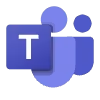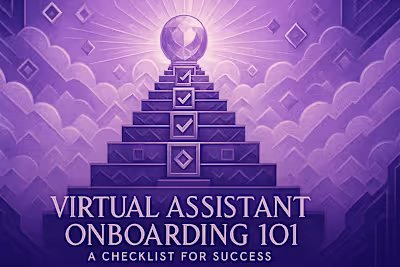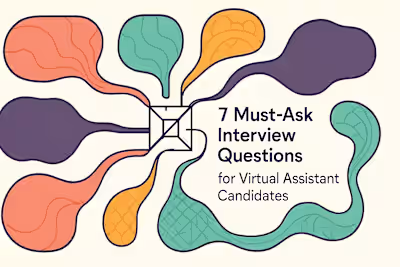Remote Communication Hacks: How to Talk to Your VA Effectively

Remote Communication Hacks: How to Talk to Your VA Effectively
Choosing the Right Communication Channel
Email for Formal and Non-Urgent Communication
Instant Messaging for Quick Questions
Video Calls for In-Depth Discussions
Mastering Asynchronous Communication
Be Clear, Concise, and Contextual
Define Response Time Expectations
Document Everything
Giving and Receiving Feedback Remotely
Be Specific and Actionable
Use a Mix of Channels
Foster a Culture of Two-Way Feedback
Conclusion
References
Remote Communication Hacks: How to Talk to Your VA Effectively
In a remote work environment, you can't rely on body language or impromptu desk-side chats. Clear, intentional communication is the bedrock of a successful relationship with your virtual assistant. When you hire a virtual assistant, you're entering a partnership that depends entirely on how well you communicate across screens and time zones. The ability to build trust from a distance becomes your superpower, and having the right tools in your arsenal makes all the difference.
Think about it - your VA might be working while you're sleeping, tackling tasks in a different country, or juggling multiple clients with varying communication styles. Without the luxury of walking over to their desk, every message, call, and email needs to count. The good news? With the right strategies, remote communication can actually be more efficient than traditional office interactions.
Choosing the Right Communication Channel
Not all messages are created equal. That urgent client issue needs different treatment than your weekly project update. Understanding which channel fits which message can transform your working relationship from chaotic to seamless.
Picture this: You send a detailed project brief via Slack message at 4 PM on Friday. Your VA, juggling notifications, misses it in the flood of weekend sign-offs. Monday rolls around, and you're wondering why the project hasn't started. Sound familiar? This scenario plays out daily in remote teams who haven't established clear communication norms.
The key is matching your message to the right medium. Just like you wouldn't send a wedding invitation via text or break up with someone through email (hopefully), professional communication needs the same thoughtful approach.
Email for Formal and Non-Urgent Communication
Email remains the gold standard for detailed instructions and important documentation. When you need to outline a complex project, share sensitive information, or create a paper trail, email is your best friend.
Here's what makes email perfect for certain situations. First, it gives your VA time to digest information thoroughly. They can read your project brief over morning coffee, take notes, and come back with thoughtful questions. Second, emails create searchable records. Six months from now, when you need to reference that specific client request, it's right there in your inbox.
But email isn't just about sending walls of text. Structure your emails for clarity. Use bullet points for action items. Include deadlines in bold. Attach all relevant files upfront. Your VA shouldn't need to decode your message or hunt for information.
Consider creating email templates for recurring requests. If you regularly need social media reports, design a template that clearly outlines what data you need, in what format, and by when. This consistency helps your VA deliver exactly what you need without the guesswork.
Instant Messaging for Quick Questions
Slack, Microsoft Teams, or even WhatsApp - instant messaging platforms are the digital equivalent of popping your head into someone's office. They're perfect for those "quick question" moments that don't warrant a formal email.
The beauty of instant messaging lies in its informality and speed. Need to know if your VA can hop on a client call in 30 minutes? A quick Slack message gets you an answer in seconds. Want to share a funny meme that reminded you of a project mishap? Instant messaging keeps the human connection alive.
But here's where many remote teams stumble - they treat instant messaging like it demands instant responses. Just because the tool is instant doesn't mean every message needs immediate attention. Set clear expectations about response times. Maybe urgent messages get a specific emoji or channel. Perhaps you agree that anything truly urgent gets a phone call.
Create dedicated channels for different purposes. A general chat for daily check-ins, a project-specific channel for ongoing work, and maybe a "random" channel for those memes and non-work conversations that build team culture. This organization prevents important messages from getting lost in casual conversation.
Video Calls for In-Depth Discussions
Sometimes, you need to see a face. Video calls bridge the gap between remote work and in-person collaboration, especially for complex discussions that benefit from visual cues and real-time back-and-forth.
Reserve video calls for conversations that truly need them. Performance reviews, project kickoffs, brainstorming sessions, and sensitive feedback all benefit from face-to-face interaction. You can gauge understanding through facial expressions, clarify confusion immediately, and build rapport through natural conversation.
But video fatigue is real. Don't default to video for everything. A well-structured video call beats three rambling emails, but a unnecessary video meeting wastes everyone's time. Before scheduling, ask yourself: "Could this be an email?" If yes, make it an email.
Pro tip: Record important video calls (with permission). Your VA can revisit complex instructions, and you create a library of training materials for future team members. Just remember to note key decisions and action items in writing afterward.
Mastering Asynchronous Communication
Here's a truth bomb: Your VA's best work might happen while you're binge-watching Netflix. Asynchronous communication - the art of communicating without expecting immediate responses - unlocks the true potential of remote work.
Think of async communication like leaving a detailed voicemail for your future self. You provide all the context, resources, and direction needed for someone to take action without you being present. It's a skill that separates good remote teams from great ones.
The shift from "always on" to async requires a mindset change. You're not being ignored if your VA doesn't respond immediately. They're likely deep in focused work, delivering the results you hired them for. This communication style respects everyone's time and promotes deep, thoughtful work over reactive scrambling.
Be Clear, Concise, and Contextual
Every async message should be a complete package. Imagine your VA opening your message with zero context - would they know exactly what to do? If not, you need more detail.
Start with context. "Following up on our discussion about the Johnson account" beats "Can you handle this?" every time. Include all relevant links, documents, and resources in your initial message. Nothing kills productivity like a chain of "Where can I find..." messages.
Write like a journalist - put the most important information first. Your VA should understand the core request within the first two sentences. Details and background can follow, but don't bury the lead under paragraphs of context.
Here's a framework that works: What needs to be done, why it matters, when it's due, and how success looks. Add any relevant resources, and you've created a message that empowers action without confusion.
Define Response Time Expectations
Without clear expectations, async communication becomes a source of anxiety. Is a two-hour response time too slow? Is checking messages once daily enough? These questions need answers before they become problems.
Create a communication charter with your VA. Maybe emails get 24-hour response times, Slack messages within 4 hours during work hours, and anything urgent gets a phone call. Document these agreements and revisit them regularly.
Consider time zones in your expectations. If your VA works while you sleep, build in buffer time for responses. Use scheduling tools to send messages during their work hours, showing respect for their personal time.
Set up status indicators that show availability. A simple Slack status saying "Deep work until 2 PM" prevents interruption anxiety on both sides. Your VA knows you're not ignoring them, and you can focus without guilt.
Document Everything
In async work, documentation isn't just helpful - it's essential. Every decision, process, and important discussion needs a home that both you and your VA can access anytime.
Create a shared knowledge base. This could be as simple as a Google Doc or as robust as a Notion workspace. Include standard operating procedures, client preferences, project templates, and FAQs. The goal? Your VA should find answers without asking you.
Meeting notes deserve special attention. Even if you have a video call, someone should document key decisions and action items. Create a template that captures who attended, what was decided, who's responsible for what, and when things are due.
Don't just document the what - document the why. When your VA understands the reasoning behind decisions, they can make better judgment calls independently. This context turns them from task-doers into strategic partners.
Giving and Receiving Feedback Remotely
Feedback without face-to-face interaction feels like walking a tightrope. Too harsh, and you damage the relationship. Too soft, and problems persist. The remote environment demands extra care in how we deliver and receive feedback.
Remember, your VA can't read your tone through text. That "quick correction" might land like harsh criticism. Conversely, your attempt at gentle guidance might seem so vague it's useless. Finding the right balance takes practice and intentionality.
The goal isn't to avoid difficult conversations - it's to have them productively. Good feedback, delivered well, strengthens your working relationship and improves outcomes for everyone.
Be Specific and Actionable
Vague feedback helps no one. "The social media posts need work" leaves your VA guessing. "The Instagram captions feel too formal - try adding more conversational language and emojis" gives them a clear path forward.
Use the SBI model: Situation, Behavior, Impact. Describe the specific situation, the behavior or action you observed, and its impact. "In yesterday's client email (S), the tone was very casual (B), which might make us appear unprofessional to this particular client who values formality (I)."
Always pair criticism with suggestions. If something isn't working, offer alternatives or resources. Maybe your VA's writing style doesn't match your brand voice - share examples of content that hits the mark. Guide them toward success rather than just pointing out failures.
Balance is crucial. For every piece of constructive feedback, find something positive to acknowledge. This isn't about sugar-coating - it's about maintaining morale and showing you notice good work too.
Use a Mix of Channels
Not all feedback belongs in the same channel. Public praise in your team Slack channel boosts morale and shows appreciation. Private video calls handle sensitive corrections with necessary nuance.
Quick positive feedback works great in instant messages. "Great job on the Thompson proposal!" takes seconds to type but makes someone's day. These micro-acknowledgments build a positive culture over time.
Save video calls for complex feedback conversations. Performance reviews, major project debriefs, or addressing recurring issues benefit from real-time dialogue. You can gauge reactions, clarify misunderstandings immediately, and show empathy through tone and expression.
Written feedback has its place too. Following up a video feedback session with written key points ensures nothing gets lost. Your VA has a reference to revisit, and you've documented important development conversations.
Foster a Culture of Two-Way Feedback
The best VA relationships aren't hierarchical - they're partnerships. Your VA sees things you don't. They might spot inefficiencies in your processes or have ideas for improvement. Creating space for their feedback makes everyone better.
Start feedback conversations by asking for input first. "How do you think that project went?" opens dialogue better than launching into your assessment. You might discover challenges you didn't know existed.
Regular check-ins create natural feedback opportunities. Weekly one-on-ones aren't just for task updates - they're for relationship building. Ask about roadblocks, suggestions for improvement, and what support they need from you.
Make it safe to speak up. If your VA suggests a better way to handle something, try it. If they point out a communication gap, address it. Actions speak louder than words in building trust.
Conclusion
Mastering remote communication with your VA isn't about perfection - it's about intentional improvement. Every miscommunication teaches you something. Every successful project builds on better communication habits.
Start small. Pick one communication hack from this article and implement it this week. Maybe you'll create that email template you've been meaning to write. Perhaps you'll schedule your first regular check-in video call. Or you might finally document that process your VA asks about monthly.
Remember, great communication is a two-way street. Share this article with your VA and discuss which strategies resonate with both of you. Build your communication charter together. After all, the best remote relationships are built on mutual understanding and respect.
The remote work revolution isn't going anywhere. The VAs who thrive and the clients who get exceptional results are those who master the art of digital communication. With these strategies in your toolkit, you're ready to build a partnership that transcends distance and delivers results.
Your VA is more than a distant taskmaster - they're a strategic partner waiting to help you succeed. Clear, thoughtful communication unlocks their full potential and yours. So take that first step. Send that well-structured email. Schedule that video call. Build that documentation system.
The future of work is remote, async, and incredibly powerful when done right. You've got the knowledge - now it's time to put it into practice.
References
Like this project
Posted Jun 30, 2025
Avoid misunderstandings and boost productivity with these communication hacks for working with a remote assistant. Learn about channels, tone, and feedback.










